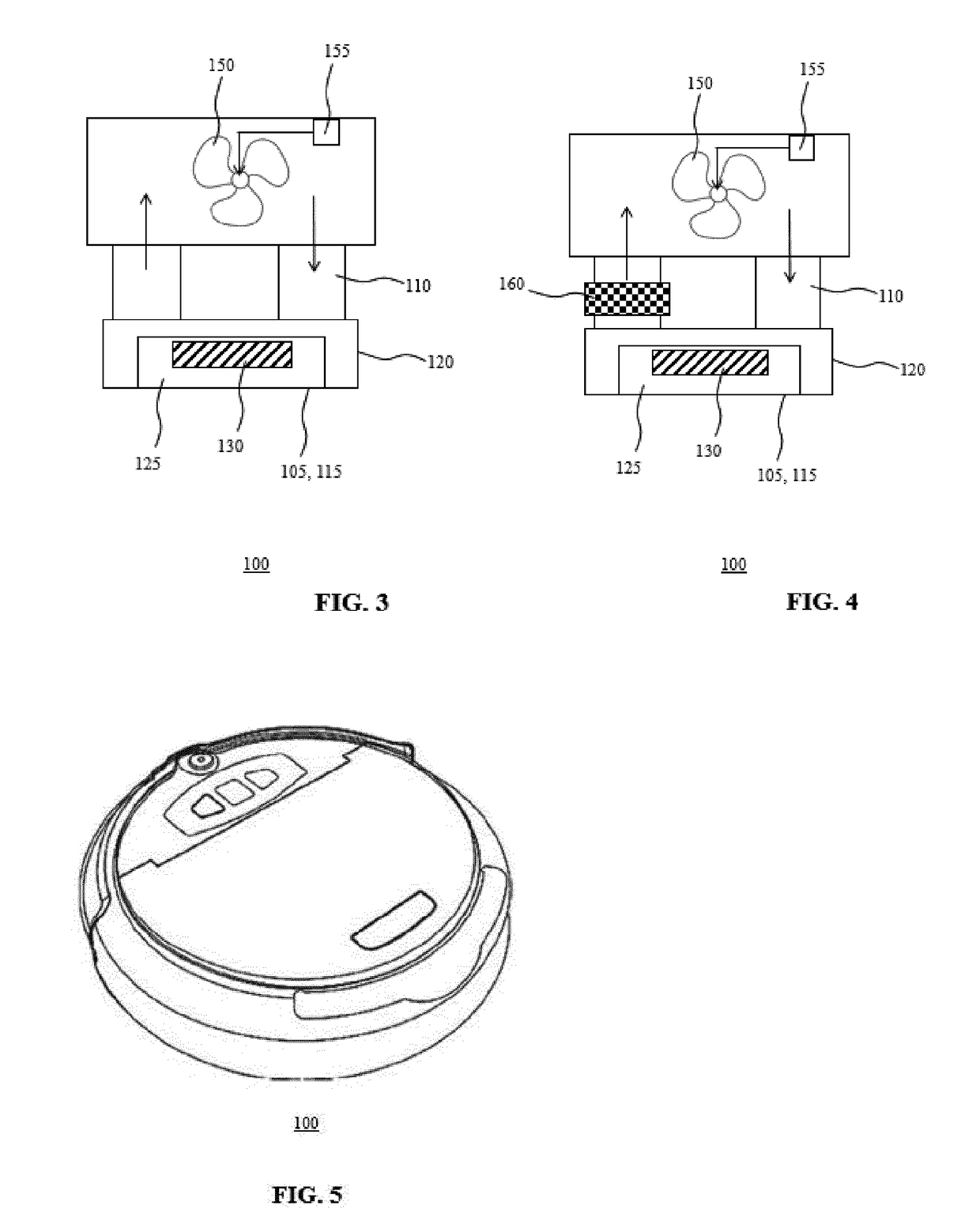Surface treatment device
a surface treatment and device technology, applied in the field of surface treatment devices, can solve the problems of generating harmful compounds, severe allergic reactions, and less effective capture of larger micro-particles, and achieve the effect of effective neutralization of surface allergens, effective neutralization of such surface allergens, and higher air flow velocity
- Summary
- Abstract
- Description
- Claims
- Application Information
AI Technical Summary
Benefits of technology
Problems solved by technology
Method used
Image
Examples
Embodiment Construction
[0040]It should be understood that the Figures are merely schematic and are not drawn to scale. It should also be understood that the same reference numerals are used throughout the Figures to indicate the same or similar parts.
[0041]Throughout the description reference is made to “reactive particles”. This may refer to plasma or another substance that can disinfect particles such as allergens.
[0042]FIG. 1 schematically depicts a surface treatment device 100 according to an embodiment. The surface treatment device 100 comprises a conduit 110 located in between an air inlet 105 and an air outlet 115 and includes an air flow generator 150 for generating an air flow from the inlet 105 to the outlet 115. The conduit typically includes an enclosure or treatment chamber 125 in which a reactive particles generator 130 such as an ionization device or a plasma generating device is located. The plasma generating device typically is a non-thermal plasma generating device and employs a dielectr...
PUM
| Property | Measurement | Unit |
|---|---|---|
| air flow velocity | aaaaa | aaaaa |
| velocity | aaaaa | aaaaa |
| thickness | aaaaa | aaaaa |
Abstract
Description
Claims
Application Information
 Login to View More
Login to View More - R&D
- Intellectual Property
- Life Sciences
- Materials
- Tech Scout
- Unparalleled Data Quality
- Higher Quality Content
- 60% Fewer Hallucinations
Browse by: Latest US Patents, China's latest patents, Technical Efficacy Thesaurus, Application Domain, Technology Topic, Popular Technical Reports.
© 2025 PatSnap. All rights reserved.Legal|Privacy policy|Modern Slavery Act Transparency Statement|Sitemap|About US| Contact US: help@patsnap.com



